We truly hope that you enjoy this article on 8 Truly Monumental Orchids. This particular family holds some of the most magnificent flowers on earth. However, these come in an astonishing variety of colors, sizes, and even shapes, as you will discover. Naturally, of course, the species we list here comprise only the tiniest handful of the nearly 30,000 known varieties. And that does not even include the myriad cultivars in existence.
Naked Man Orchid
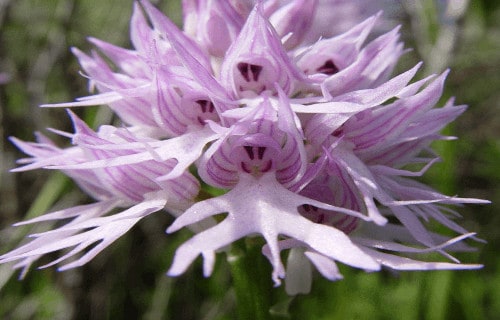
CCL: https://bit.ly/1p2b8Ke
Naked Man Orchid Facts
- We thought that we would start off this article on 8 Truly Monumental Orchids with one that never fails to generate interest, the Naked Man Orchid.
- Firstly, this particular variety forms a rather unusual species of orchid. Most notably, this image has not been photoshopped, and shows exactly why the remarkable plant bears its common name.
- This astonishing flower also remains one of the fortunate ones, compared to many related species. Due to having a sufficient population, it currently lists with the IUCN as a Species of Least Concern.
- Although it does not rank as endangered at this time, that could change in the very near future. That’s because the known numbers of the species appear to be declining rapidly, for a variety of reasons.
- Finally, regardless of its current listing, all orchid varieties are protected by the CITES treaty. It also easily earns its place among these 8 Truly Monumental Orchids.
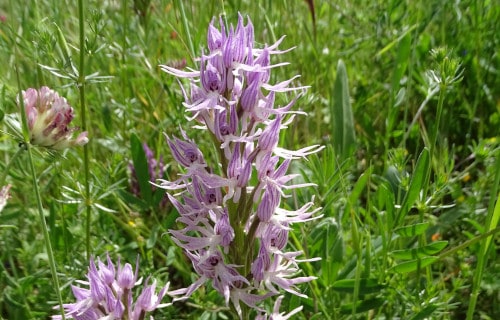
CCL: http://bit.ly/2JszWtI
Naked Man Orchid Physical Description
Firstly, the most obvious characteristic of the Naked Man Orchid remains the over-sized lobed lip of every flower. By a rather amusing quirk of Nature, this vaguely resembles the general shape of a naked man.
Also, the plant produces a single, comparatively thick stalk. Further, this feature typically attains a height of roughly 20 in (50 cm). Several short, light green leaves may also be present on occasion.
The uniquely shaped flowers of this hermaphroditic plant also appear in large clusters. Additionally, these most often present varying shades of pink. Furthermore, two dark circles resembling eyes also develop.
But, in a surprising twist of Nature, not every bloom displays the eye-like spots. The reason some do while some do not presently remains a mystery. Further, the plant also produces numerous tubers, which are edible.
- Kingdom: Plantae
- Phylum: Angiosperms
- Class: Monocots
- Order: Asparagales
- Family: Orchidaceae
- Genus: Orchis
- Species: O. italica
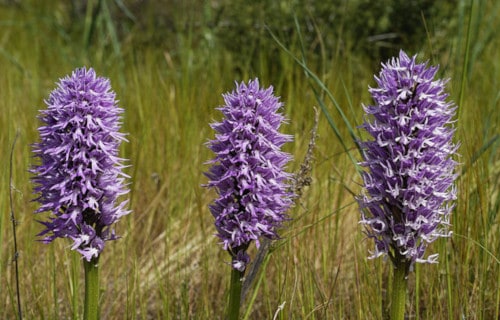
CCL: http://bit.ly/2IjEG4n
Naked Man Orchid Distribution, Habitat, and Ecology
The Naked Man Orchid developed as native to the Mediterranean region. The Orchis italica occurs in Portugal, Spain, Italy, Serbia, Greece, the Aegean islands, Turkey, Cyprus, Malta, Syria, Jordan, and also northern Africa.
It also grows at altitudes of up to 4,300 ft (1,300 m), and typically prefers areas of direct sunlight. In addition, the plant will also flourish in a wide range of soil types. This holds true as long as it has adequate drainage.
The Orchis italica also most commonly appears in fertile meadows or regions of light forests. Finally, it typically blooms between the months of March and May and usually grows in large groupings.
Plumed midge-orchid
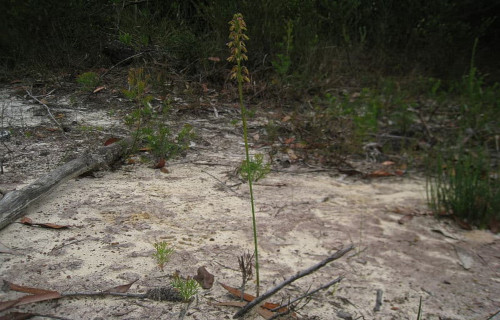
CCL: https://bit.ly/1ryPA8o
Plumed midge-orchid Facts
- Next up in this compendium of 8 Truly Monumental Orchids is the dazzling Plumed midge-orchid. What a remarkable fascinating species.
- First of all, the term serves as the unusual common name for the Geneplesium plumosum. This decidedly different looking orchid remains rather difficult to find, and thus rarely seen
- Furthermore, the first formal description of the very rare flower only occurred in 1942. As a result of a detailed exploration of the area, clergyman and botanist Herman Rupp was the first to scientifically identify it
- Quite unfortunately, most specimens of the remarkable plant only inhabit an extremely tiny area. However, a handful of individual plants also appear in the Morton National Park.
- Finally, researchers estimate the total number of individual plants still extant at no more than a few hundred. Because of this unfortunate fact, the IUCN understandably lists the species as Endangered.
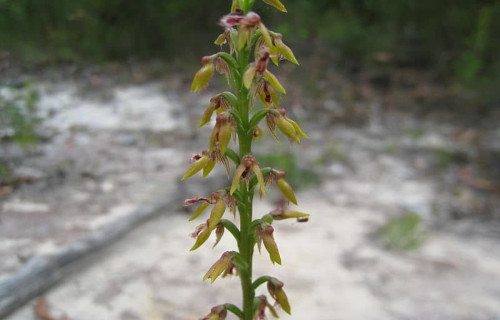
CCL: https://bit.ly/1ryPA8o
Plumed midge-orchid Physical Description
Firstly, the gorgeous Plumed midge-orchid evolved as a terrestrial perennial. It also has both fine roots and tubers. Additionally, the tubers have a protective covering, and often extend to the surface.
Classified as a ground orchid, it rarely exceeds 12 in 30 cm) in height. However, it produces multiple short stems, each containing 1-6 tiny flowers. Also, the color pattern consists of green, with stripes of pink and purple.
Also, the relatively small leaves end directly below the flowers themselves. Uniquely, the petals have a covering of very fine hairs. Finally, though tiny, the non-fleshy fruit forms as a capsule, which contains hundreds of seeds.
- Kingdom: Plantae
- Phylum: Angiosperms
- Class: Monocots
- Order: Asparagales
- Family: Orchiaceae
- Genus: Genoplesium
- Species: G. plumosum

CCL: https://bit.ly/1ryPA8o
Plumed midge-orchid Distribution, Habitat, and Ecology
Most notably, the awesome Plumed midge-orchid, sadly, has a tiny habitat range. Excepting a few scattered plants in a National Park, the majority of this consists of an area of only 8 sq mi (20 sq km). This occupies a remote section of New South Wales, in Australia.
Further, in that region, its habitat remains restricted to to the Southern Tablelands. As a result, it mostly lives amid sections of low shrubs, within the confines of a forest. Yet it occasionally inhabits moss gardens, as well.
The marvelous flower also has an unusually adaptable blooming cycle. That’s because it typically blooms 4-6 weeks after a period of rain. However, this will occur in either the summer or the autumn seasons.
Quite unfortunately, a current count of its population does not exist. But, in 2008, only an estimated 250-280 plants existed. One reason for its steep decline appears to be the clearing of land. Secondly, however, seems to be overgrazing by an introduced species of rabbit.
White Egret Orchid
White Egret Orchid Facts
- Our third choice for inclusion among these 8 Truly Monumental Orchids is the delicate beauty, the White Egret Orchid.
- Most notably, this plant is a truly unique and beautiful species of orchid. Furthermore, and rather understandably, its common name derives from its supposed resemblance to a white egret.
- This occurs due to the fact that its shape suggests to many minds a very specific image. That image is the appearance of white wings spread for flight. The physical resemblance cannot be denied.
- Such a unique plant also perfectly demonstrates the creativity of Nature. Its scientific classification (Habenaria radiata) is also quite appropriate since it appears to radiate beauty.
- Finally, this delicate flower also remains quite rare in the wild, and seems to have always been so. In addition, like some other species, it is even the subject of several legends within its endemic range.
White Egret Orchid Physical Description
Easily earning its placing among these 8 Truly Monumental Orchids, the White Egret Orchid is an amazing terrestrial species. Additionally, this plant itself constitutes a small shrub which attains a typical height of approximately 15 in (38 cm).
Its leaves also grow comparatively long and thin, much like blades of grass. Typically, the plant produces either two or three flowers on each short stem. However, these may sometimes number as many as eight.
The calyx is also generally egg-shaped, while the sepals are small and green. Most noteworthy, however, are the three lobes. The two largest extend laterally and develop highly fringed edges, which serves to further accentuate the appearance of wings.
- Kingdom: Plantae
- Phylum: Angiosperms
- Class: Monocots
- Order: Asparagales
- Family: Orchidaceae
- Genus: Pecteilis
- Species: P. radiata
White Egret Orchid Distribution, Habitat, and Ecology
Firstly, the stunning White Egret Orchid evolved as endemic to a rather extensive habitat range. This territory covers widely scattered portions of Asia, including Japan, China, Korea, and certain portions of Russia.
Not surprisingly, the species requires a highly specific habitat type. This beautiful and unique flower also grows naturally in seepage slopes and wetland regions. Rather interestingly, it only occurs naturally at moderate to high elevations, which is unusual for orchids.
The White Egret Orchid also matures during the summer and rainy season. Because of this, it typically blooms from July to August. However, during Autumn, the plant typically enters a period of dormancy.
Finally, and truly sadly, the species appears to be in rapid decline in the wild. But, the IUCN has not yet given the species a classification status. However, that may change in the near future, as its situation deteriorates.
Cattleya Orchid
Cattleya Orchid Facts
- Next up in this listing of 8 Truly Monumental Orchids is the breathtaking Cattleya Orchid. What a stunning beauty.
- Firstly, the term names an entire genus containing 113 gorgeous species of orchids. While this sounds like quite a lot, comparatively, it isn’t. That’s because more than 26,000 species of orchids exist around the world.
- But, the first discovery of this group by non-native individuals only occurred in 1817, in Brazil. Consequently, researchers later took samples to Glasgow for identification and further study.
- Additionally, the Cattleya Orchid actually bears the name of William Cattleya, a British horticulturist of the time. He was the first to successfully grow it outside of its native habitat.
- Finally, following this single shipment for research, outsiders did not see it again for another 70 years. This occurred due to erroneous information pertaining to the location of its discovery.
Cattleya Orchid Physical Description
Most notably, the Cattleya Orchid remains best known for having large, brilliantly colored blooms. The size of the blooms also varies greatly by species. However, these typically range from 2-6 in (5-15 cm) across.
The colors of the various individual species also include almost every color. But, that excludes black and a few shades of blue. Furthermore, the majority of breeds produce flowers with three narrow sepals.
In addition, it also typically produces three broad petals. One of these usually forms the conspicuous lip the plants remain known for. Finally, a single plant sometimes displays anywhere from 1-10 flowers.
- Kingdom: Plantae
- Phylum: Angiosperms
- Class: Monocots
- Order: Asparagales
- Family: Orchidaceae
- Genus: Cattleya
Cattleya Orchid Distribution, Habitat, and Ecology
The Cattleya Orchid remains a purely tropical group of species. It generally occurs in a range extending from Argentina to Costa Rica, in South America. The various types most commonly grow in areas of bright sunlight, with partial shading.
The color of the leaves also easily varies according to the amount of sunlight they receive. Under optimum conditions of lighting, however, the leaves develop an apple green color.
Finally, this orchid does not bloom without ample sunlight. It prefers soil with a rather high moisture content, but with ample drainage. The plant also reproduces through the production of pseudobulbs. Some species even bloom twice per year.
Lady Slipper Orchid
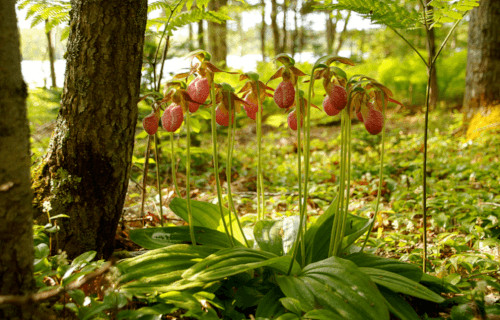
CCL: https://bit.ly/3xmELwd
Lady’s Slipper Orchid Facts
- The fifth species that we selected for this listing of 8 Truly Monumental Orchids is the wonderful Lady’s Slipper Orchid.
- First of all, the term names a truly beautiful and diverse family that contains more than 50 species. In addition, over 30 of these claim North America as their native habitat range
- In addition to the diversity of its family, each species varies from other orchids in a unique way. They have been classified as diandrous. Each of these unique plants has two fertile anthers, rather than one, like other orchids
- While climate change and habitat loss threaten many plants worldwide, many of these species remain somewhat fortunate. This occurs because twelve species occur on protected National Forest System lands, in the United States.
- This family has nearly disappeared from the extreme western portion of its range. In Great Britain, while the site remains carefully guarded, only one small population of a single species remains extant.
Lady’s Slipper Orchid Physical Description
Most notably, the various species of the beautiful Lady’s Slipper Orchid family vary significantly in appearance. However, each member of the genus possesses many general characteristics with the others.
Each remains characterized by the presence of slipper-shaped pouches on the flowers, and the role these play in pollination. The stems of the different species also range in height from 8-28 in (20-70 cm) and usually support 1-2 flowers, yet 3 appear occasionally.
It presents a wide variety of colors, including pink, red, brown, white, yellow, and purple. Meanwhile, the leaves of most species display a unique light green color, which further sets it apart from most orchids.
- Kingdom: Plantae
- Phylum: Tracheophyta
- Class: Liliopsida
- Order: Orchidales
- Family: Orchidaceae
- Genus: Cypripedium
Lady’s Slipper Orchid Distribution, Habitat, and Ecology
Firstly, the gorgeous Lady’s Slipper Orchid family has a rather extensive habitat range. That holds true because this primarily includes North America and parts of Asia and Europe, as well. The various species inhabit temperate, boreal, and tropical forests.
While its beauty awes its admirers, its growth rate presents problems for those attempting to preserve the family. Experts rank it as among the slowest-growing plants known to man. Individuals often require as much as 11 years of growth before maturing and producing flowers.
Furthermore, it only reproduces via propagation and rhizomes, not with tubers as well, like other orchids. In addition, the tiny seeds rely upon a symbiotic association with a mycorrhizal fungus for germination. This makes efforts to artificially propagate the family difficult.
Western Underground Orchid
Western Underground Orchid Facts
- The sixth of these 8 Truly Monumental Orchids, the Western Underground Orchid, is indisputably the most unique, and for a very good reason.
- Most notably, the amazing species actually lives and blooms entirely beneath the surface of the earth. Due to this unbelievable fact, it’s an incredibly rare and remarkable type of plant.
- Therefore, regrettably, botanists cannot definitively ascertain just how many of these unique flowers may exist.
- In addition, the befuddling discovery, occurring in 1928 was entirely accidental since it is a subterranean species. Also, only 19 mature specimens are known to exist in the wild.
- It evolved as part of an extremely unique and specialized ecosystem. It appears to be entirely dependent upon the presence of a specific species of shrub and a specific variety of fungus.
- Finally, at the moment, the IUCN has no listing for the species. This occurs due to the understandable lack of sufficient information.
Western Underground Orchid Physical Description
Firstly, the Western Underground Orchid is an entirely subterranean plant. Therefore, the unique plant has no need for coloring. The chemical chlorophyll does not appear in its chemical composition.
In addition, it boasts a white, leafless stem, and a flower head. Also, the flower head itself is made of 150 tiny, densely packed blooms. Yet it is tiny, averaging only 0.5 in (1.27 cm) across.
Its most noteworthy characteristic is its utterly fascinating symbiotic development. It draws all of its nourishment from one rather rare species of shrub, the broom honey myrtle. This makes for a complicated system.
A unique type of fungus also links the two plants. In fact, the orchid receives all of its nutrients, water, and carbon dioxide from the shrub, through the fungus.
- Kingdom: Plantae
- Phylum: Angiosperms
- Class: Monocots
- Order: Asparagales
- Family: Orchidaceae
- Genus: Rhizanthella
- Species: R. gardneri
Western Underground Orchid Distribution, Habitat, and Ecology
The Western Underground Orchid remains extremely rare, and only a few specimens have ever been found. The full extent of the species’ range, therefore, remains uncertain. However, all specimens discovered to date have been in western Australia.
Botanists know little about the species because of its rarity, yet we do know that the orchid blooms between May and June. We also know that it is capable of both sexual and asexual reproduction.
Further, presumably, insects such as termites and gnats possibly serve as the principal pollinators of this species. The plants also appear to take 6 months to reach maturity.
The most serious threats to the species consist of climate change and habitat loss. This holds true because bushland comprises its only known habitat. However, that obviously may not remain the case, as more information becomes available.
Lycaste Orchid
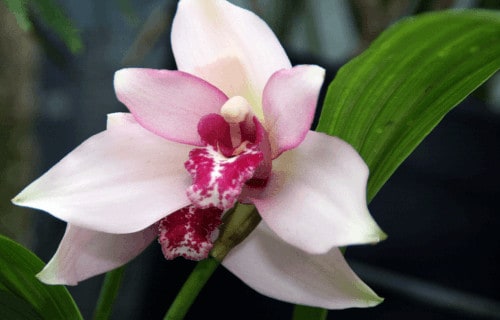
CCL: https://bit.ly/1xMszCg
Lycaste Orchid Facts
- This next of our 8 Truly Monumental Orchids, the gorgeous Lycaste Orchid, is a widely cultivated variety, due to its marvelous properties.
- Firstly, the term represents the common name of an entire group of flowers. Further, this small but impressive genus of truly breathtaking orchids contains roughly 30 species of plants.
- Many experts also consider this to be the most beautiful of all known varieties of orchid. In addition, its extreme popularity with gardeners around the world would seem to support this opinion.
- Along with its great beauty, the flower also remains renowned for its distinctive aroma. This scent has, in fact, often been compared to a unique combination of cloves and cinnamon.
- Finally, due to its great popularity, numerous hybrids and cultivars exist. As a result, various forms of the Lycaste Orchid have become among the most common of all types of orchids.
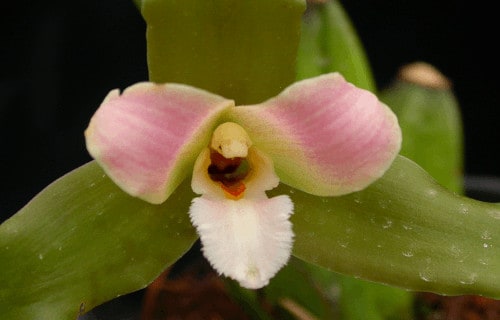
CCL: https://bit.ly/1p2b8Ke
Lycaste Orchid Physical Description
First of all, all known varieties of the gorgeous Lycaste Orchid have quite similar characteristics. Therefore, most possess the thin, pleated leaves, and egg-shaped pseudobulbs for which the genus has become famous.
Further, as with all orchids, the flowers in this magnificent genus possess three sepals and three petals. In addition to this trait, all of the various forms also commonly present several color varieties.
The sepals may be either orange, green, reddish brown, or yellow. Meanwhile, however, the petals are most commonly white, orange, or yellow. This makes for a striking pattern of colors.
Additionally, the flowers of most Lycaste Orchid varieties typically grow to a length of about 4 in (10 cm) in diameter. But, a few varieties, however, sometimes reach a length of as much as 7.1 in (18 cm).
- Kingdom: Plantae
- Phylum: Angiosperms
- Class: Monocots
- Order: Asparagales
- Family: Orchidaceae
- Genus: Lycaste
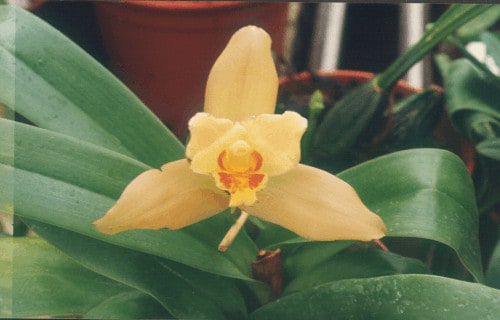
CCL: https://bit.ly/2LTO13N
Lycaste Orchid Distribution, Habitat, and Ecology
Most notably, all known natural varieties of the rather stunning Lycaste Orchid evolved as endemic to the same part of the world. As a result, all remain native to the forest regions of Central America and South America.
In fact, the various varieties grow in the wild through an extensive territorial range. Moat notably, this extends from Brazil all the way to Mexico. But, it occurs most commonly in warm, moist, tropical climates.
Within the genus, the Lycaste Orchid also splits into two main groups. However, this trait remains rather common among plants. These particular groups consist of the Deciduosae and Macrophyllae.
On one hand, the Deciduosae group grows within a temperature range approximating 90 F (32.2 C). Meanwhile, the Macrophyllaes prefer a temperature range of 60-80 F (15.6-26.7 C). The relative humidity in both endemic regions is also between 50-70%.
Bee Orchid
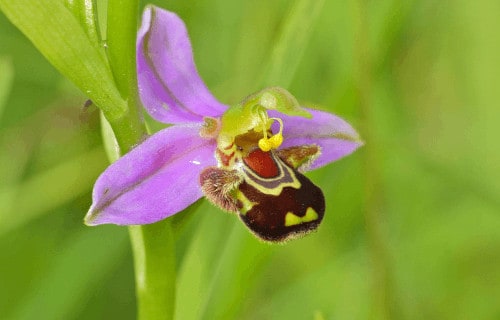
CCL: https://bit.ly/1jxQJMa
Bee Orchid Facts
- The final entry among our choices of 8 Truly Monumental Orchids, but only due to random selection, is the awesome Bee Orchid.
- Firstly, the distinctive term represents the common name for this mesmerizing species. The surprisingly shaped small perennial also forms a herbaceous plant in the family Orchidaceae.
- Rather unsurprisingly, the plant draws its common name from its distinctive appearance. That occurs because of, to many, the resemblance of the blooms to a comically smiling large bee.
- Further, it remains unique to its particular genus in that it is almost entirely self-pollinating. However, many other types of orchids, as well as numerous other flowering plants also self-pollinate.
- Finally, the IUCN does not yet have a listing for this species on its Red List of Threatened Species. This occurs primarily due to the fact of its wide distribution. This allows for a greater chance of maintaining the species.
Bee Orchid Physical Description
Most notably, the best-known feature of the amazing Bee Orchid remains its unique appearance. That, obviously, is its extremely close resemblance to a bee, albeit a quite large one. It remains unknown if this serves some evolutionary purpose.
Further, the sincerely fabulous plant often grows as tall as 20 in (50 cm). In addition, it typically blooms from mid-April until July. The amazing plant also produces a copious quantity of beautiful blooms.
In addition, this number usually ranges from a total of 1-12 flowers. Such a wide range of potential blooms also sets it apart from some related species. Finally, these blooms often range in color from white to pink.
- Kingdom: Plantae
- Phylum: Angiosperms
- Class: Monocots
- Order: Asparagales
- Family: Orchidaceae
- Genus: Ophrys
- Species: O. apifera
Bee Orchid Distribution, Habitat, and Ecology
The fascinatingly evolved Bee Orchid also prefers a rather temperate climate. Additionally, the stunning species evolved as endemic to a wide range, extending through much of Europe.
Furthermore, the remarkable plant most commonly grows on semi-dry turf. That most often includes grasslands, on limestone, open areas of woodlands, or calcareous soils, in either dim or bright light.
This plant species appears to be quite widespread across both central and southern Europe. Yet, it also appears as well in both North Africa and the Middle East. It is unknown if this is its natural range, or if it has been spread through the actions of man.
Unlike most flowers, this flower actually grows throughout the winter. The orchid varieties found in the most northern distribution have adapted, however. These produce a scent that mimics the scent of female bees. This draws male bees in and provides pollination.
We sincerely hope that you have enjoyed this article about 8 Truly Monumental Orchids. In all their stunning glory and variety, these flowers represent some of the most beautiful plants known to man. However, many of them, much like other species, now find themselves in perilous situations. Many now face the threat of imminent extinction, if present trends continue. It remains up to all of us to do all that we can to protect and preserve these awesome species for our descendants and our world itself.
Check out our other articles on Rare North American Flowering Plants, Spectacular Dolphins Throughout Our World, Earth’s Geothermal Marvels, Wonderful Wild Cats of the World
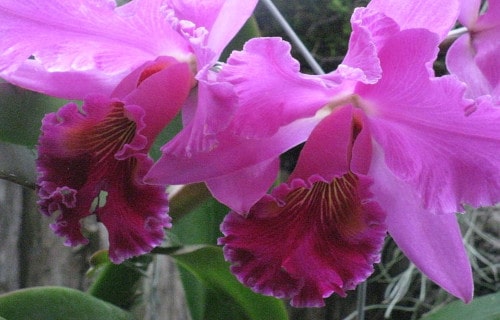
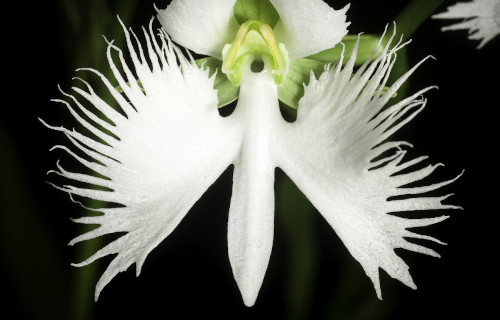
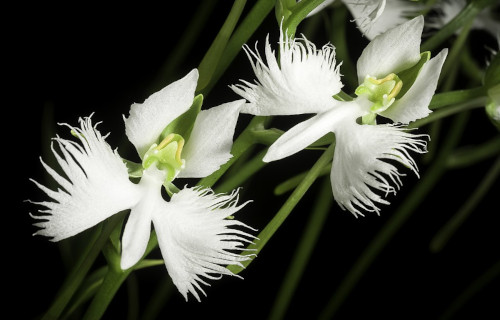
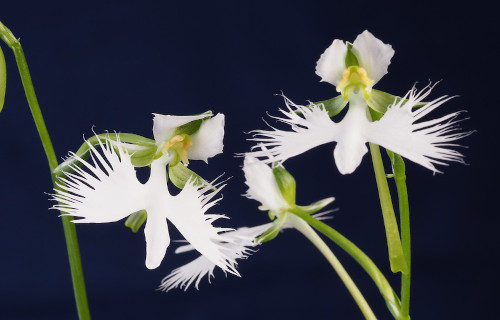
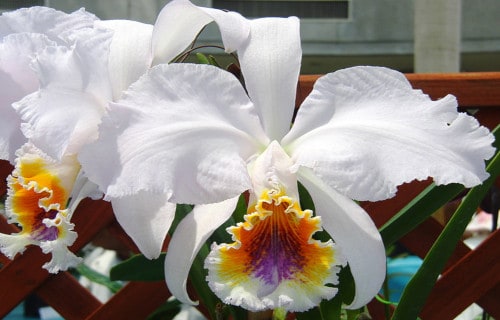
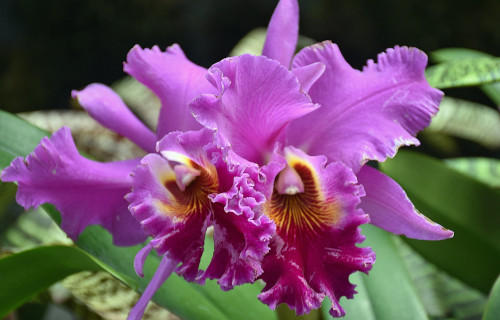
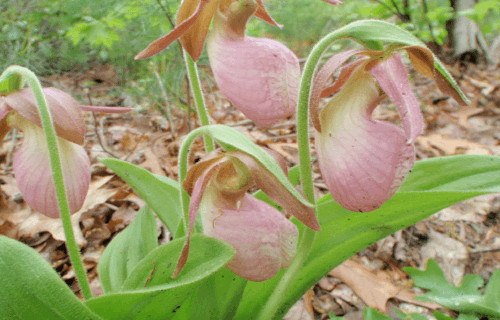
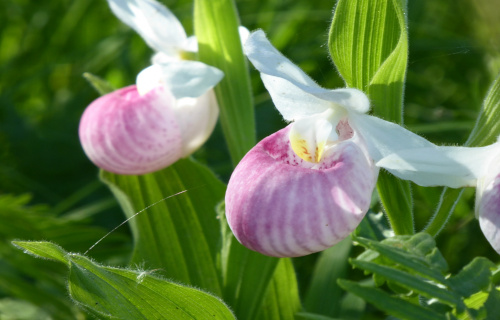
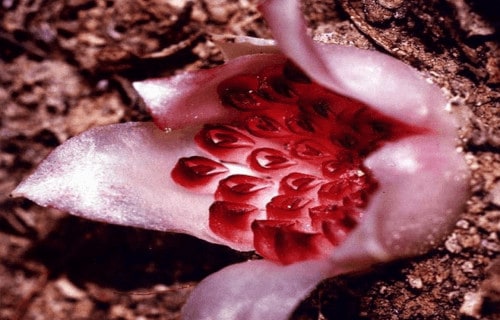
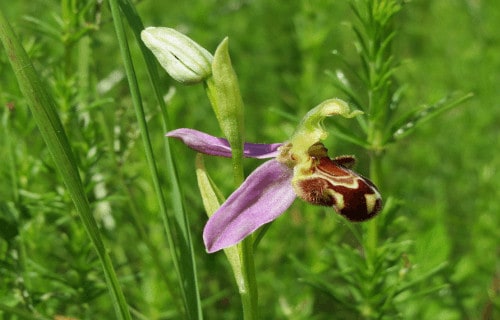
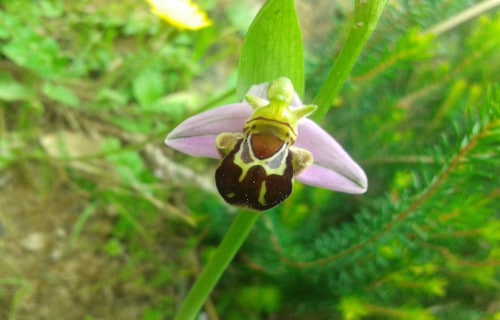









Leave a Reply